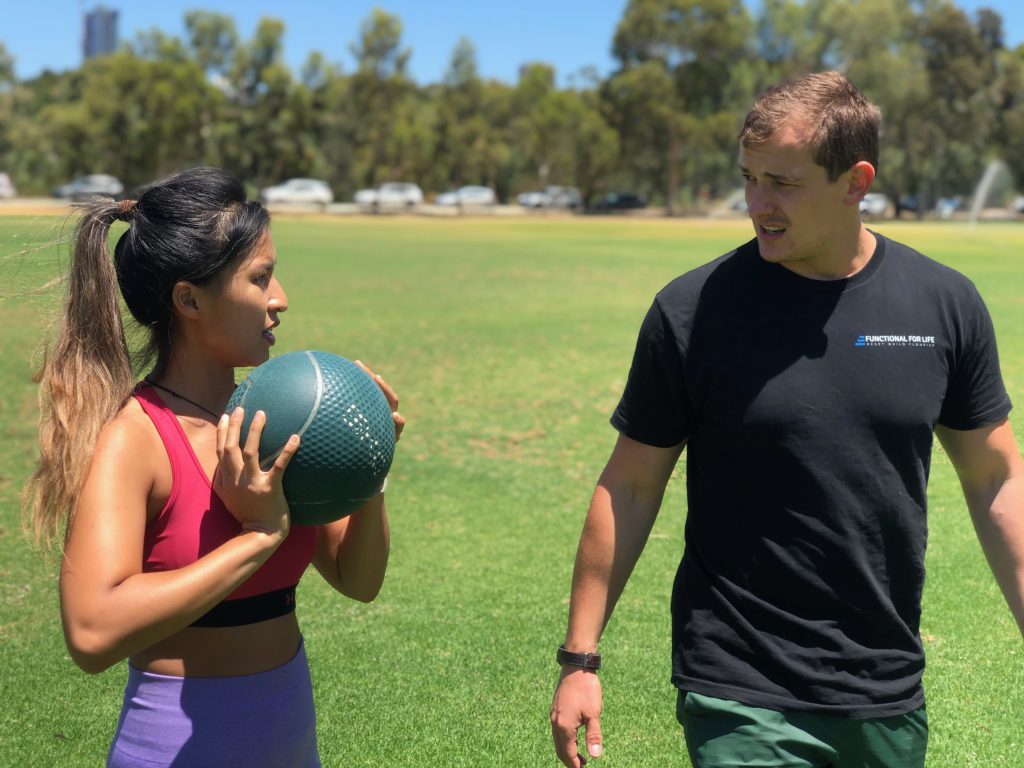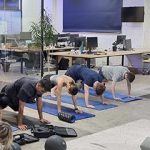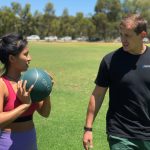The word ‘Functional’ is among the most used terms in the fitness space today. Arguably popularised by brands such as F45 in the mid noughties, it seems every where you turn there is another gym popping up geared around the concept of Functional Training. In this blog we aim to break down, exactly what Functional Training is and how you can use it to improve your health and fitness.
At its core, Functional Training is a holistic approach to fitness. It’s not just about lifting weights or running on a treadmill. It’s about training the body to handle real-life situations. Unlike the isolated movements often seen in traditional gym workouts (think a bicep curl), functional training focuses on exercises that mimic everyday activities. Whether it’s lifting a heavy box, pushing a door, or bending down to tie your shoes, functional training prepares your body for real-world scenarios.
It is for this reason, that functional training for an individual of a certain lifestyle or profession is going to be unique to them. i.e. the ideal functional training for a tennis player will likely look different to a desk worker. In general, functional training ensure that you’re not just fit but also equipped to handle daily tasks with ease, making life more efficient.
The Principles Behind Functional Training
Functional training is more than just a trend; it’s a philosophy. It’s built on a foundation of unique principles that set it apart from other fitness methodologies. These principles guide the design of workouts, ensuring that they’re not just effective but also relevant to daily life.
- Movement Patterns: Traditional gym workouts often focus on isolated muscle groups. In contrast, functional training emphasizes natural movement patterns like pushing, pulling, squatting, and rotating. These movements are fundamental to our daily lives and ensure that we train in a way that’s practical and beneficial.
- Muscle Engagement: Functional exercises often engage multiple muscle groups simultaneously. This holistic approach not only burns more calories but also promotes better coordination and balance. It ensures that the body works in harmony, reducing the risk of injuries.
- Adaptability: One of the beauties of functional training is its adaptability. These workouts can be tailored to fit any fitness level. Whether you’re a beginner just starting out or a seasoned athlete looking for a challenge, functional training has something to offer.
Benefits of Functional Training
The advantages of incorporating functional training into your fitness routine go beyond just muscle strength. It’s about overall wellness and improving the quality of life.
- Overall Health: Engaging in functional exercises can lead to a range of health benefits. It can improve cardiovascular health, boost muscle strength, and enhance flexibility. Over time, this can lead to better posture, fewer aches, and a more active lifestyle.
- Injury Prevention: One of the main goals of functional training is to train the body to move correctly. By doing so, it reduces the risk of injury both in and out of the gym. Proper form and technique are emphasized, ensuring that exercises are done safely.
- Improved Quality of Life: This is perhaps the most significant benefit of functional training. It enhances your ability to perform daily tasks with ease. Simple activities, from carrying groceries to playing with your kids or even just climbing stairs, become easier and more enjoyable.
How to Get Started with Functional Training
Starting with functional training doesn’t have to be complicated. With the right guidance and approach, you can embark on this rewarding fitness journey.
- Assess Your Needs: Before diving in, take a moment to identify your fitness goals. Are you looking to build strength, improve flexibility, or enhance your endurance? Your goals will guide your training plan.
- Choose the Right Exercises: Functional training is vast, and the exercises are diverse. Start with basic movements that mimic daily activities and gradually incorporate more complex exercises that challenge you.
- Set Achievable Goals: Setting goals is crucial. Whether it’s mastering a new exercise, increasing your workout intensity, or even just being consistent, set clear and attainable milestones. Celebrate your achievements, no matter how small.
- Seek Professional Guidance: If you’re unsure where to start, consider hiring a trainer or joining a functional fitness class. Professional trainers can provide valuable insights, and assist in guiding you around the exercises that are going to be safe and beneficial as you begin your training journey.
Functional Training Equipment and Tools
While functional training can often be done with body weight alone, introducing certain equipment can enhance your workouts, adding variety and intensity.
- Kettlebells: These are versatile tools, great for full-body exercises. They can help in improving grip strength, building core stability, and enhancing cardiovascular fitness.
- Resistance Bands: These flexible tools offer variable resistance. They are perfect for strength training, muscle toning, and even rehabilitation after injuries.
- Stability Balls: Incorporating stability balls can challenge your core like no other tool. They are excellent for improving balance, stability, and overall muscle engagement.
- Dumbbells: A great way to add some additional resistance to a range of functional movements, improving strength, stability and can also assist in cardio based exercises.
The great news is, it does not have to break the bank to purchase this equipment, particularly for beginners! Whilst fitness and sports store are always a great option as a one stop shop for all your fitness equipment needs, they can be on the pricier side. As a beginner, a fantastic starting point to purchase equipment is K-Mart and a secondary option Big-W. Both of these stores have a great selection of all things functional fitness and come in at a very reasonable price point for those starting out.
Sample Functional Training Workouts:
At Functional For Life we view functional exercises in two brackets, the broad functional movements. These are the basic movements we do in day to day life, i.e. bend to extend, push, pull in the horizontal plane and push pull above our head. From here, we can break functional movements down even further based on individual need. For example if you were a tennis player we would work a lot on sideways movement and explosive movement as this is relevant to you. If you were a desk worker the likely starting point would be addressing your core stability ensuring your glutes, and core are strong, engaged and responsive. As a strong and stable core is the foundation of all functional movements.
Below we provide a range of broad and non-specific functional workouts. We will highlight which fall more into the beginner phase, advanced and what to expect in each workout. At the very least we hope you find some new and engaging workout routines! As always we recommend seeing a doctor before engaging in a physical exercise program.
Beginner:
The hip complex plays a vital roll in our ability to move as efficiently and effectively as possible. Mobilising this area can lead to greater range of movement and the capacity to use the muscles around our hips in a more bio-mechanically efficient way. The below routine is geared towards freeing up the hip complex. With more mobility in this area the greater opportunities we have to engaged in more complex strength exercises with the correct form and technique.
Intermediate:
The below workouts fall under the banners of yoga and pilates. Through this yoga workout we work on improving the overall mobility of our body and intertwined elements of strength to hold certain positions, all whilst being mindful of controlled breathing throughout.
Our pilates workout has a major focus on overall strength with a particular focus on engaging and working the core and muscles around the hips. Our view at Functional For Life PT is a strong and engaged pillar of the core and glutes is the foundation of all movement patterns.
Advanced:
The below workouts start to ramp up the intensity and focus on moving through a range of whole body and isolated movements. All of these workouts aim for a holistic approach targeting all major muscle groups.
If you enjoyed these videos and are looking for more workout ideas be sure to check out Functional For Life TV!
Learn More about Functional Training with Functional For Life
This article has only begun to delve into the vast world of functional training. To truly understand its depth and potential, consider seeking expert guidance. Dive deeper and elevate your fitness journey with insights from Functional For Life. Whether you’re just starting out or have been training for years, there’s always more to learn, explore, and achieve in the realm of functional fitness.






